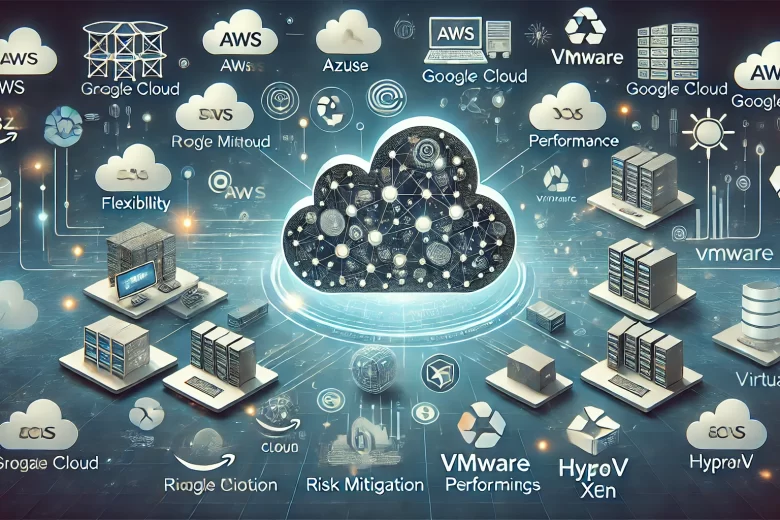Cloud computing is one of those buzzwords you’ve likely heard a lot recently, but what does it actually mean? In simple terms, cloud computing refers to using the internet to access computing resources like storage, processing power, and applications instead of relying on local servers or personal computers. It’s like having a virtual IT infrastructure that you can use anywhere, anytime, without needing to own the hardware.
Let’s break it down further and explore how cloud computing is transforming our lives and the way businesses operate.
What is Cloud Computing?
Traditionally, companies needed to invest heavily in physical servers, networking equipment, and storage systems to manage their data and run their applications. This infrastructure was costly and required regular maintenance. Cloud computing changes that by allowing businesses and individuals to “rent” computing power, storage, and services from data centers around the world.
With cloud computing, you access these resources over the internet, using only what you need and paying only for what you use, much like how you’d pay for utilities like electricity or water.
Types of Cloud Computing
Cloud computing generally comes in three main categories:
- Infrastructure as a Service (IaaS): This gives users virtualized computing resources like servers, storage, and networks. Think of it as renting a building with all the tools you need to customize it for your needs.
- Platform as a Service (PaaS): PaaS provides a platform that developers can use to build, test, and manage applications without worrying about managing the underlying infrastructure.
- Software as a Service (SaaS): This is the most familiar type of cloud service. SaaS delivers software applications over the internet, allowing users to access tools like email, CRM systems, or office suites from a web browser.
How Does Cloud Computing Impact Our Lives?
Cloud computing has revolutionized the way we store and access information. Whether you realize it or not, you’re probably using cloud-based services every day. Here are some examples of how it affects our daily lives and the business world:
- Data Storage and Backup: Tools like Google Drive, Dropbox, and iCloud allow us to store files, photos, and videos without worrying about physical hard drives. The cloud provides virtually unlimited storage, accessible from any device.
- Collaboration: Cloud-based tools like Google Docs or Microsoft 365 enable real-time collaboration on projects, regardless of where team members are located. It makes working remotely or across different time zones a seamless experience.
- Streaming Services: Platforms like Netflix, Spotify, and YouTube run on cloud infrastructure, allowing them to stream vast libraries of content to millions of users simultaneously, without needing to download anything locally.
- Business Efficiency: Companies no longer need to invest heavily in IT infrastructure. Cloud services allow businesses to scale up or down easily, add new services, and cut costs on maintaining expensive hardware.
How Can We Use Cloud Computing?
Cloud computing isn’t just for large companies; individuals and small businesses can also benefit from it in a variety of ways:
- Remote Work: With cloud-based applications, employees can work from anywhere, securely accessing files, collaborating with colleagues, and attending virtual meetings without the need for physical servers or office setups.
- Automated Backups: Instead of manually backing up important documents, cloud services provide automatic backups, ensuring your data is secure and easily recoverable in case of an emergency.
- Cost-Efficiency: Instead of purchasing expensive software licenses or servers, businesses can subscribe to cloud services that fit their needs, paying for exactly what they use.
- Flexibility and Scalability: Startups and growing businesses can scale their operations quickly with cloud resources, without the need for heavy upfront investment in infrastructure.
Cloud Computing is Integrated Everywhere
Cloud computing is no longer a novelty – it’s a foundation for much of our technology ecosystem. From e-commerce websites handling millions of transactions daily to healthcare systems managing patient records securely, cloud computing has become essential. Even small-scale apps on your smartphone often rely on cloud servers to function.
Industries across the board – from education and finance to healthcare and manufacturing – are leveraging the power of the cloud to increase productivity, reduce costs, and enhance customer experiences.
The Future of Cloud Computing
As cloud computing continues to evolve, we’re seeing new trends emerge, like edge computing, where data is processed closer to the user rather than at centralized data centers, improving speed and reducing latency. Additionally, hybrid cloud models are becoming more common, combining public and private cloud infrastructure to provide greater flexibility and security.
Cloud computing is also becoming critical in fields like artificial intelligence and big data analytics, enabling massive amounts of data to be processed quickly and efficiently.
Final Thoughts
Cloud computing has fundamentally changed the way we store, access, and manage data. It offers flexibility, cost-efficiency, and scalability, making it an attractive option for individuals and businesses alike. As cloud technologies continue to develop, they will drive innovation in nearly every industry, paving the way for new opportunities and transforming the way we work and live.
The cloud is here to stay, and as we embrace it, we unlock endless possibilities for the future.

